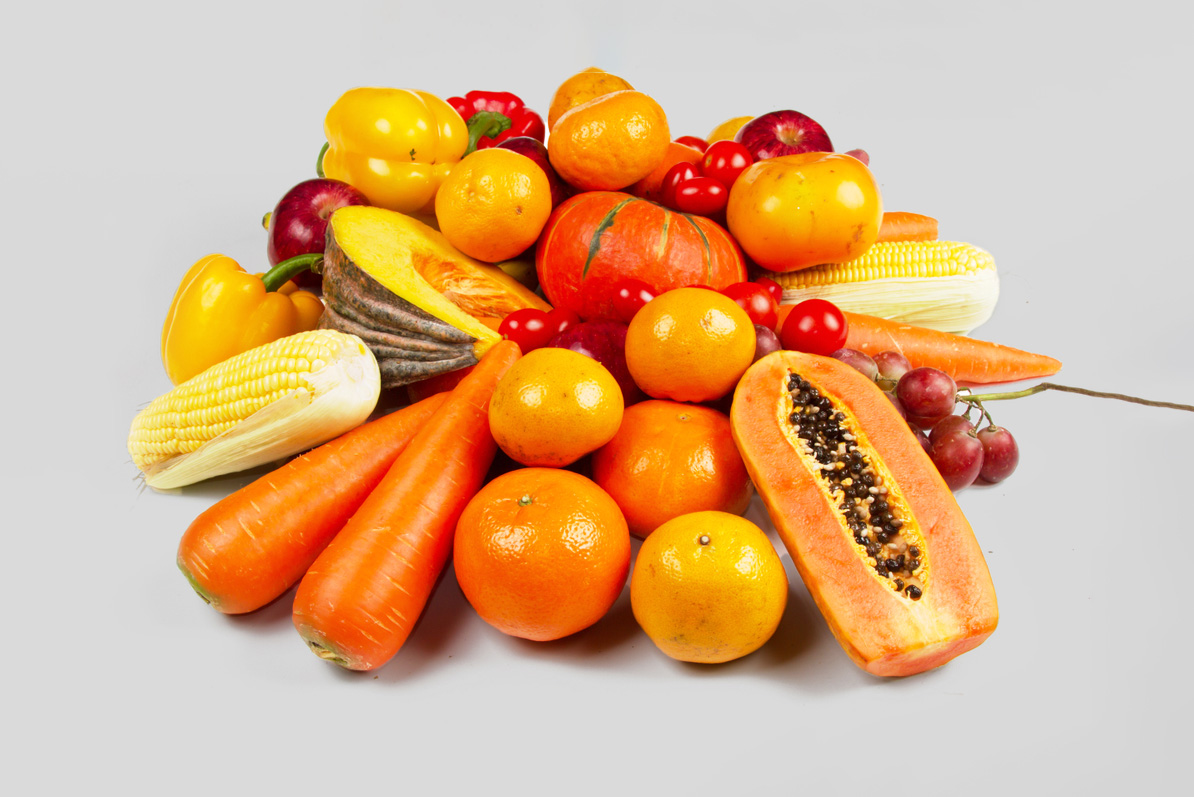Did you know that eating carrots, cantaloupe, tomatoes, and cherries promote a lasting tan? Here’s the best diet for a TOP complexion (and more).
In anticipation of summer, who wouldn’t want to show off an enviable tan? The correct use of sunscreen products can make all the difference, but diet can also make a valuable contribution. Nutrition and tanning, and in general the condition of the skin, are closely linked. There are both foods that are good for the skin and foods that are able, thanks to the nutrients they contain, to promote a tan and help prolong the beautiful complexion we have in the summer. Let’s see together which foods and micronutrients are allies of our tan.
 Tanning diet: here are your summer allies
Tanning diet: here are your summer allies
Here’s a list of vegetables, fruits, foods, and grains that can’t be missed on the summer table.
Tanning diet: vegetables
Carrots rank first because they are rich in beta-carotene (100 grams of carrots contain 1,200 micrograms of carotenoids), a precursor to vitamin A. Beta-carotene stimulates the production of melanin (responsible for the darker complexion) and helps the skin protect itself from the negative effects of the sun’s rays. The advice is to eat them cooked because by cooking them, you increase the bioavailability of this nutrient. Spinach and radicchio are also great for our tan. They contain less beta-carotene than carrots but are excellent (600 micrograms per 100 grams). Plus, like other green leafy vegetables, they are a source of lutein, an important substance because it protects the retina from harmful solar radiation.
Lycopene
Speaking of substances that protect against the action of the sun, how can we forget about lycopene, an antioxidant in which tomatoes are extremely rich? Lycopene is present in all red fruits and vegetables. The classic dish of the Italian culinary culture-pasta with tomato is perfect because cooking and adding olive oil while cooking the tomato increases the absorption of lycopene. Peppers also promote tanning. In fact, they contain between 100 and 150 micrograms of vitamin A per 100 grams, corresponding to about 30 percent of the average daily requirement for an adult. In addition, they are rich in vitamin C. The tan ally vegetable you don’t expect? Lettuce, which is in the top ten of the highest beta-carotene-rich foods (it provides as much as 250 micrograms per 100 grams). Lettuce is also beneficial to the skin because of its high water content, which accounts for 94 percent of its weight, and then it is a low-calorie food (19 calories per 100 grams): a perfect ally for dieters!
 Tanning diet: fruit
Tanning diet: fruit
Yellow-orange fruits are also an excellent source of beta-carotene. In the pole position are apricots, which can provide up to 500 micrograms of beta carotene per 100 grams, while peaches contain up to 100micrograms of vitamin A per 100 grams. Melon is also excellent: 100 grams of pulp provides 200 micrograms of vitamin A (40 percent of the daily requirement). These fruits, moreover, are also rich in water (which is obviously essential at this time of year. Read more in the last paragraph!). You should have them as a snack or for breakfast! At this time, however, it is good to fill up on strawberries and cherries (and, as soon as you can, watermelon), which are rich in vitamins, including beta carotene and minerals. Cherries, then, contain flavonoids: they counteract the negative action of free radicals that can form during sun exposure.
Tanning diet: protein
Protein is also essential for healthy skin. At the top spot, we find salmon, which is rich in astaxanthin, a molecule (part of the carotenoid family) produced by the algae that salmon eats; it is also responsible for its pink color. Astaxanthin protects the skin exposed to sunlight. Salmon also contains omega-3, which canblock oxidative stress triggered by exposure to sunlight responsible for photoaging.
Tanning and healthy skin: the importance of hydration
It is essential to drink the right amount of water every day to have a beautiful amber color but also healthy, smooth and hydrated skin. “The skin,” says Dr. Antonella Franceschelli, medical aesthetician owner of Studio Franceschelli in Rome, medical consultant tutor in the outpatient aesthetic medicine clinics of Fatebenefratelli Isola Tiberina Hospital and Uniderm consultant, says on her blog, “it is the largest organ of our body and, obviously the hydration of the skin will be greatly affected by the hydration of the whole body. Water performs many vital functions for our body: it is a nutrient, maintains body volume, and regulates our temperature. Dehydrated skin will appear withered and aged.” How much water should be consumed every day? “For women, it is good to drink at least 2 liters of water a day. For men at least 2.5 liters. Obviously, these amounts should be increased in case of fluid loss with sweat, for example, on hot days or after training.”
